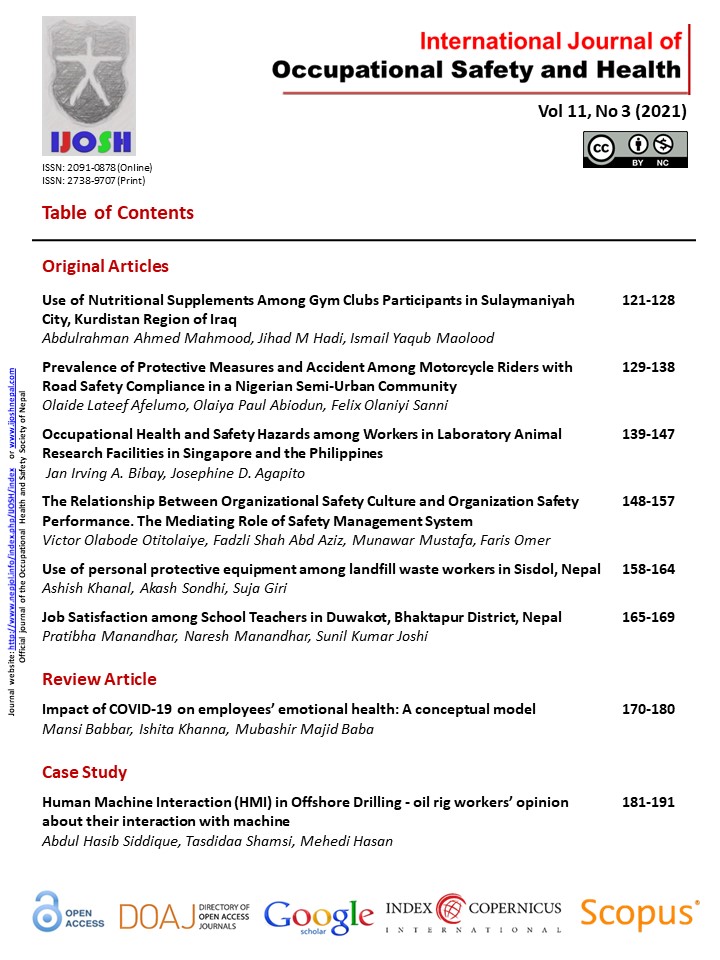Occupational Health and Safety Hazards among Workers in Laboratory Animal Research Facilities in Singapore and Philippines
DOI:
https://doi.org/10.3126/ijosh.v11i3.39765Keywords:
hazards, laboratory animal, occupational health, safety, workersAbstract
Introduction: All workers, regardless of occupation are vulnerable to various hazards present at work. This study was carried out to determine the commonly encountered occupational hazard of laboratory animal workers in Singapore and the Philippines. Moreover, to determine the percentage of hazard exposure according to the workers’ personal profile, work profile, and frequency of exposure.
Methods: All members of the Association for Laboratory Animal Science of Singapore (n=150) and the Philippines (n=130) were invited in an online survey administered anonymously via email. Only those respondents who fulfilled the inclusion criteria (i.e. 18 years old and above and working in direct contact to animals and its environment) were included in the analysis.
Results: Laboratory animal workers experienced all hazards identified in the laboratory animal facilities. The three most common hazards encountered by workers based on the mean (M) and median (Mdn) number of exposures were animal-related injuries (M= 1.269, Mdn= 1), ergonomics (M= 1.067, Mdn= 0) and sharp-related injuries (M= 0.885, Mdn=1). There was no significant difference noted between these three hazards when compared to one another. These hazards were consistent regardless of age, gender, education, job, biosafety level of the facility, years of experience and type of animal exposures.
Conclusion: Laboratory animal workers in Singapore and the Philippines are exposed to various hazards in the workplace. Younger workers, and workers with higher day-to-day exposure to laboratory animals, should be prioritized for information dissemination, training, and supervision.
Downloads
Downloads
Published
How to Cite
Issue
Section
License
Copyright (c) 2021 JI Bibay, JD Agapito

This work is licensed under a Creative Commons Attribution-NonCommercial 4.0 International License.
This license enables reusers to distribute, remix, adapt, and build upon the material in any medium or format for noncommercial purposes only, and only so long as attribution is given to the creator.





